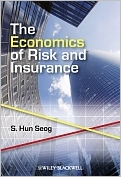| |||||
• polskie
• Zamów informacje o nowościach z wybranego tematu • kontakt |
THE ECONOMICS OF RISK AND INSURANCES. HUN SEOGwydawnictwo: WILEY-BLACKWELL, 2010, wydanie Icena netto: Written for advanced undergraduate and master’s level courses, this book builds from a base of asymmetric information issues to discuss a wide array of topics and is illustrated with some timely examples.
S. Hun Seog is Professor of Finance and Insurance at the Graduate School of
Business, Table of Contents 0. Introduction. Part I: Fundamentals of Insurance. 1. Risk and Expected Utility. 2. Risk Aversion and Riskiness. 3. Principles of Insurance: Risk Sharing and Transfer. Part II: Demand for Insurance and Insurance Contract. 4. Risk Aversion and Insurance. 5. Corporate Insurance and Risk Management. 6. Liability and Insurance. Part III: Information and Insurance Contract. 7. Basic Adverse Selection Models. 8. Advanced Topics in Adverse Selection. 9. Moral Hazard. 10. Ex Post Moral Hazard and Fraud. Part IV: Insurance Market. 11. Insurer Organization. 12. Competition in the Insurance Market. 13. Insurance Cycle and Capacity. Part V: Insurer Management. 14. Insurance Distribution Systems. 15. Insurance Pricing. 352 pages, Hardcover Księgarnia nie działa. Nie odpowiadamy na pytania i nie realizujemy zamówien. Do odwolania !. |


